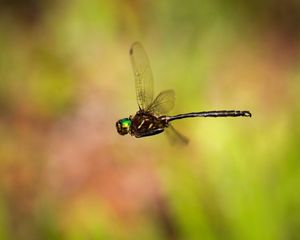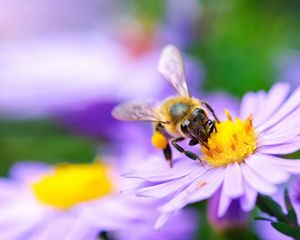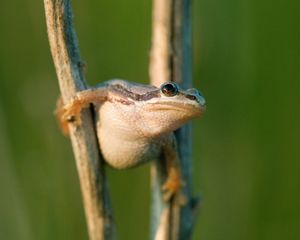
Wisconsin Nature Through the Seasons
From expansive wetlands and tranquil lakes to rolling hills and sandy prairies, Wisconsin has a bounty of beautiful places to explore year round.

Autumn
There’s a definite chill in the air as summer winds down and turns to autumn. It’s the perfect season to get outside and immerse yourself in the vibrant palette of autumn leaves while catching sight of neo-tropical birds beginning their long journeys back south.




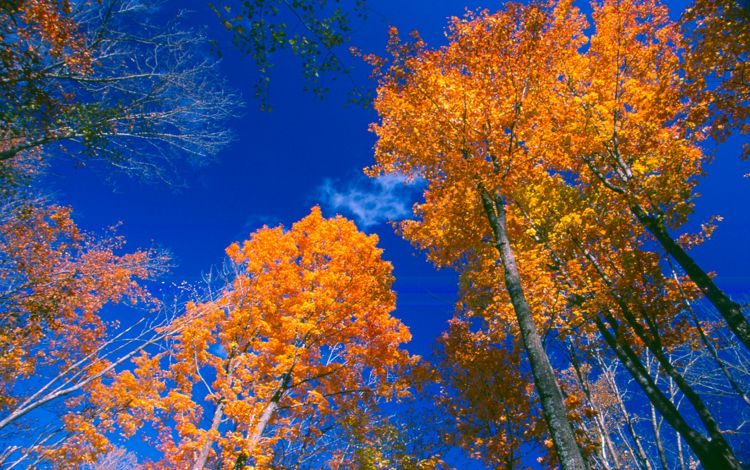
Colorful Foliage
Cooler temperatures and shorter days mean the trees begin to change into their autumn splendor. The change in seasons signals to the trees to stop their food making processes, and the green chlorophyll of the leaves begins to break down, allowing the reds, oranges and yellows of the leaves to shine. Without a doubt, the Baraboo Hills have some of the most brilliant and beautiful fall foliage and are a must-see in the autumn. Pro-tip: If you want the most up-to-date information on the peak of fall foliage around Wisconsin, visit Travel Wisconsin’s Fall Color Report.

We Can’t Save Nature Without You
Sign up to receive monthly conservation news and updates from Wisconsin. Get a preview of Wisconsin's Nature News email.





Mammals on the Move
Fall is a great time to spot mammals in the wild, as they are preparing for the upcoming cold season. Beginning in August (to avoid disturbing ground-nesting birds), trails are mowed and maintained at Lulu Lake Preserve and the Newell and Ann Meyer Nature Preserve, and you may be able to see red fox, beaver, muskrats or even badgers. Early fall is the mating season for white-tailed deer and is an excellent time to spot heavily antlered large bucks. In northwest Wisconsin and Jackson County, be sure to keep your ears open for the bugling call of male elk as they seek mates in their breeding season.
Pro-tip: Hunting is permitted on many TNC preserves, so if you are hiking in the fall, please wear blaze orange as a safety precaution.


Golden Prairies
In late August through October, Thomson Memorial Prairie and Barneveld Prairie become blanketed in asters from white to bright purple and the brilliant yellow of goldenrods. These plants are a vital source of nectar for many pollinators, but none so much as the iconic monarch butterfly. These beautiful orange and black butterflies are gearing up for one of the most extraordinary migrations of the animal kingdom, as they prepare to fly south to Mexico to overwinter.
Fun fact: While goldenrod often gets the blame for fall allergies, its pollen is too heavy to be carried by the wind. It relies solely on pollinators like the monarch to spread its pollen. Instead, the less conspicuous, but just as common, ragweed, is the culprit causing much of the fall allergies we experience.
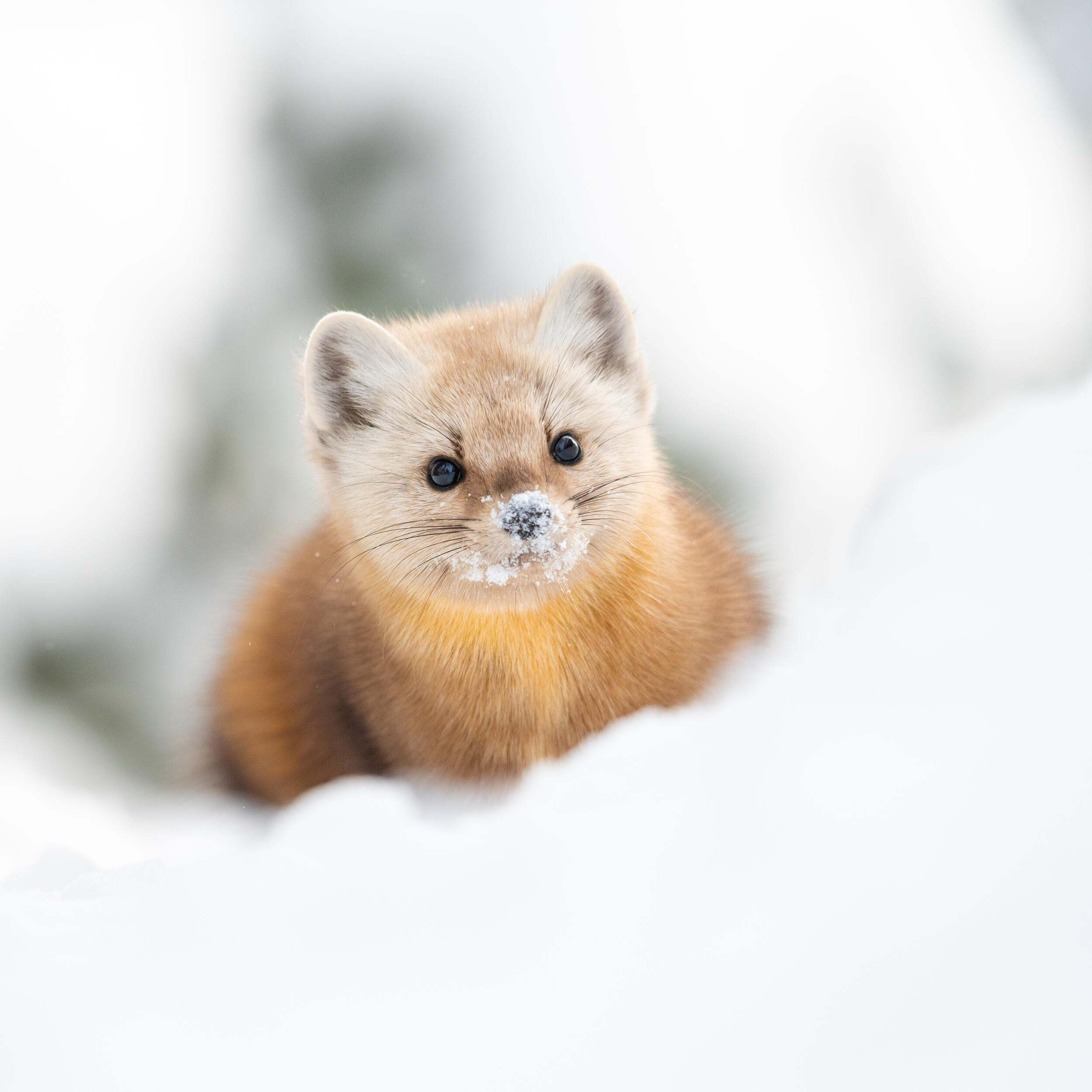
Winter
Don’t let anyone tell you otherwise—winter is one of the best seasons to get outside and enjoy all nature has to offer. With the leaves off the trees, views of wildlife and our scenic vistas are the most open of the year. Plus, who doesn’t want to play in the snow?
Spending time in nature is a great way to keep the winter blues at bay. With enough layers and a decent thermos, you can make the most of the colder months and find new ways to connect (or reconnect) with the wilder places in our state. Most of our properties are open to hiking, snowshoeing and cross-country skiing, and whether you want to stay close to home or make a weekend out of it, there’s a TNC preserve for you.
Recommended preserves:
Lulu Lake (35 minutes southwest of Milwaukee): Part of the Mukwonago River Watershed, Lulu Lake is a 95-acre kettle lake surrounded by beautiful oak openings. Lulu’s ungroomed trails are great for snowshoeing or cross-country skiing, and the property is a year-round birdwatching haven.
Catherine Wolter Wilderness Area (Just north of Boulder Junction): Boasting 2,654 protected acres and 15 wild lakes and ponds, this wildlife area is open to hiking, cross-country skiing and snowshoeing. The Town of Presque Isle maintains 2.5 miles of groomed trails during the winter months. Dogs are allowed, provided they are on a leash.
Pro-Tip: Thanks to the lake effect, the Door Peninsula has some of the softest, fluffiest snow for cross-country skiing and snowshoeing!

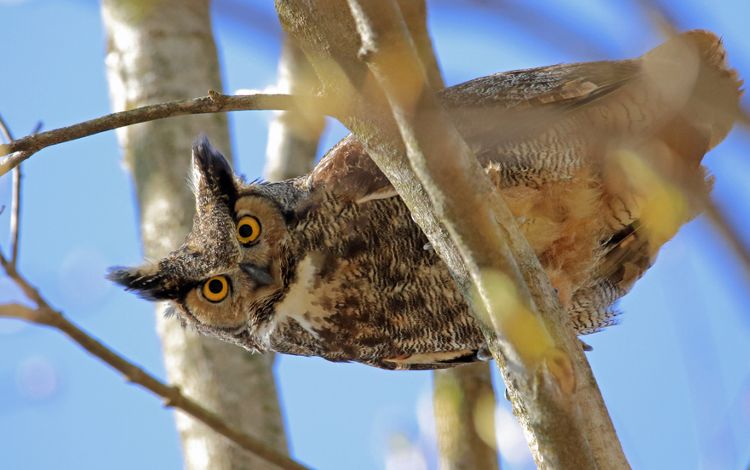

Whooo Goes There?
Winter is prime owl season in Wisconsin. Not only are these magnificent birds easier to spot with the leaves off the trees, but many species, like great horned owls, begin their nesting and breeding season in late winter. The true owl stars of winter, though, are the snowy owls that visit northern Wisconsin and the Door Peninsula. Snowy owls are generally an Arctic species, however, small numbers reach Wisconsin each year. Every handful of years, large numbers move into the state, an event known as an "irruption." What causes these irruptions is not entirely understood, but they provide a wonderful opportunity for more people in Wisconsin to spot these beautiful owls.
Wildlife Detective
Winter’s snows provide the perfect chance to flex and grow your wildlife tracking skills. From the common hoofprints of white-tailed deer to the elusive paw prints of fishers, you never know whose tracks you’ll spot in the snow throughout TNC's preserves.




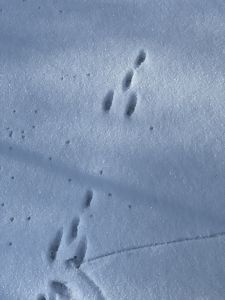

Coyote Pawprint: Coyote pawprints are a common sight in the snow. © Charles Larry

Coyote: Coyotes are present in every county in Wisconsin. © Lisa Bourgeault /TNC Photo Contest 2019

Moose: While uncommon, moose have been seen in the Northwoods. © Jean Wallace/TNC Photo Contest 2021

Fisher: Elusive fishers are a once-in-a-lifetime find up north. © Kent Mason

Rabbit Tracks: Rabbits' distinctive pawprints are easy to identify. © Cassie Barnes
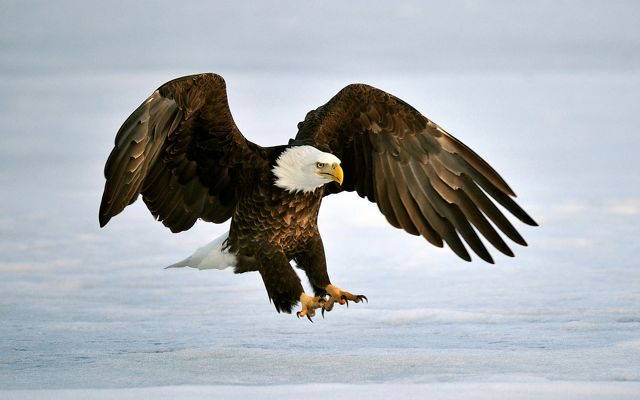

Bald Eagles
Beginning in January and February, bald eagles begin to reclaim and rebuild their nesting sites across the state. Typically, eagles begin nesting earlier in the south and later in the season the farther north you go. They nest and breed early in the year to have plenty of time to incubate eggs and raise their young before winter begins to roll back in. Thanks to intensive conservation efforts since the 1970s, the bald eagle population has rebounded across North America and in Wisconsin especially. These magnificent birds have documented active nests in all but one county in Wisconsin, and you have a good chance of spotting them in winter along any waterway. They’ve been spotted at Lulu Lake Preserve in the Mukwonago River Watershed, all preserves on the Door Peninsula and at our Northwoods preserves.
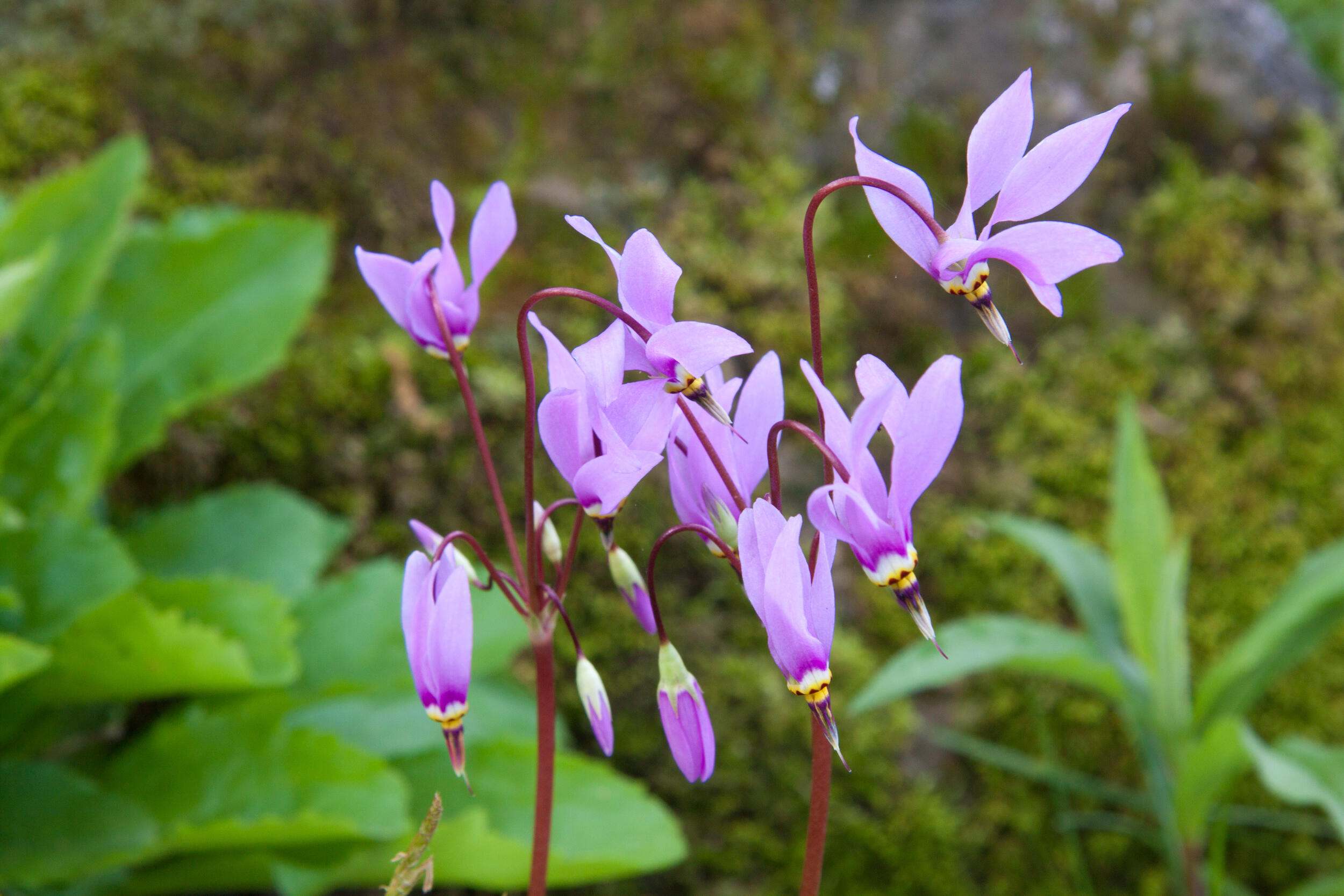
Spring
As the winter chill begins to retreat, nature in Wisconsin starts to emerge. From delicate, ephemeral wildflowers to the bright colors of returning birds, there’s a lot to see and do at The Nature Conservancy's Wisconsin preserves in the spring!
Blooms and Blossoms
For those weary of winter, TNC preserves in the Baraboo Hills and the Door Peninsula offer an abundance of early signs of spring: ephemeral wildflowers unfurling their blooms in the still chilly air. These perennial wildflowers—such as spring beauty, bloodroot, trout lilies and large-flowered trillium—bloom for a brief time at the beginning of spring. They’re often small and nestled into forest floors and marshes, so we recommend a slow and careful pace on the trails to look for wildflowers!




Spring Chorus
At the beginning of spring, the shorelines along bodies of water erupt with the boisterous calls of frogs and toads. The Catherine Wolter Wilderness Area, with its wild lakes and woodland ponds, is prime habitat for frog chorusing. Numerous looped hiking trails there can be walked in the early evening to hear this spring singing.






Spring Peeper: These tiny frogs are the first to emerge in spring. © Derek Johnson

American Toad: Emerging later in the spring, toads trill short songs. © R. Carr

Wood Frog: Singing wood frogs sound a lot like chickens clucking. © Chad Bladow

Pickerel Frog: Pickerel frogs secrete toxins to deter predators. © Thomas Arter

Gray Tree Frog: Like toads, gray tree frogs sing later in spring. © Mark Daniels





Songbird Spring Migration
Wisconsin is a birder’s paradise, especially in spring! Between March and June, nearly 300 species of birds from South and Central America, the Caribbean and the southern U.S. stop to rest or nest in Wisconsin.
As many as 250 different bird species either breed in the Baraboo Hills or pass through during migration. TNC preserves in the Door Peninsula offer some of the best birding in the state since many species of migrating birds follow insect hatches along the Lake Michigan shoreline. Northern Wisconsin hosts 24 breeding species of warblers in places like the Catherine Wolter Wilderness Area. These far northern specialists include species like palm, Blackburnian, black-throated blue, Northern parula and magnolia warblers.
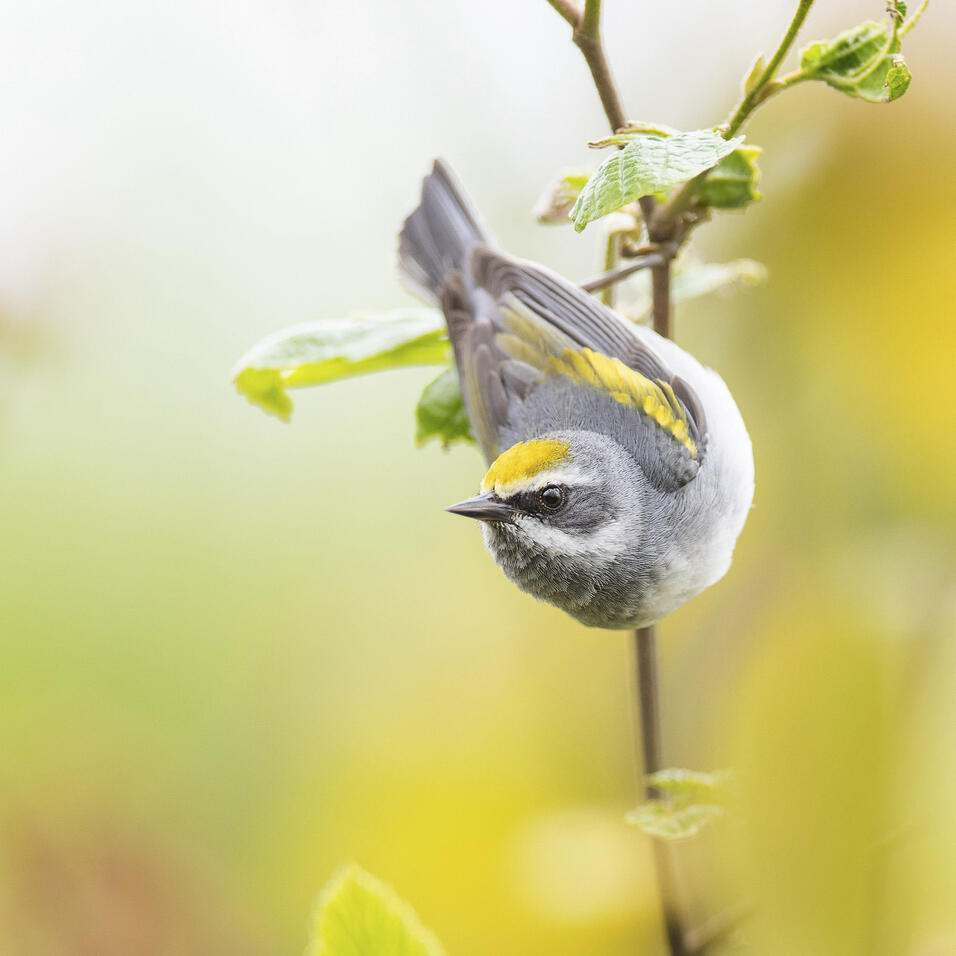
Summer
From blooming cactus to deeply shaded old-growth forests, the hottest months of the year bring out some of Wisconsin's most unusual and amazing nature sights.
Pro tip: If you go hiking at any of our preserves in the summer, wear sunscreen and use insect repellent to ward off ticks, mosquitos, flies and other biting pests.

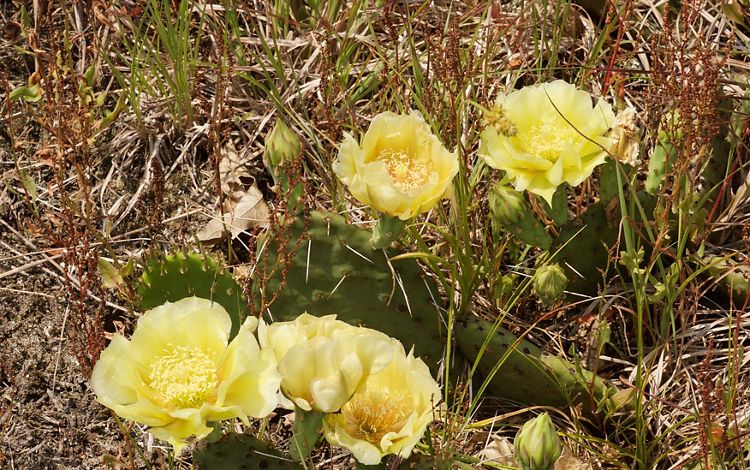



Peak Prairie Season
From late May through August, there is nothing quite like the wild and vivid colors of wildflowers like blazing star, wild bergamot and common spiderwort blooming in the diverse prairies of the Military Ridge Prairie Heritage Area. Keep an eye out for the tall compass plants, which are well adapted to hot and dry conditions thanks to their ability to orient their leaves north to south to avoid direct noonday sun. But the standout is the prickly pear cactus blooming at Spring Green Preserve in June and July. In this protected place, the prickly pear cacti grow in dense patches, each large, waxy yellow flower blooming for a single day, then disappearing.
Tigers in Wisconsin
Within the prairies and arid driftless area of Wisconsin, fierce and deadly hunters stalk their prey—tiger beetles are in their prime. Spring Green Preserve is home to 10 of the 16 species of tiger beetles native to Wisconsin. Tiger beetles are voracious hunters and incredibly fast runners. You have to keep a sharp eye to spot them while they hunt!
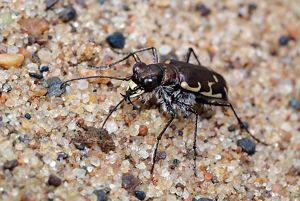

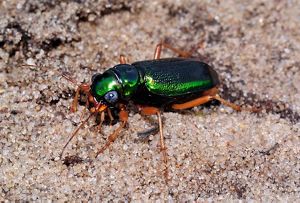
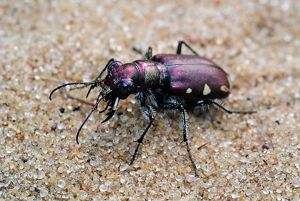
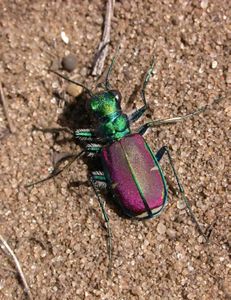

Bronzed Tiger Beetle: Bronzed tiger beetles are out and about both day and night, and they tend to be fairly gregarious, swarming together in large numbers. © Mike McDowell

Six-spotted Tiger Beetle: While tiger beetles are excellent hunters, they are also hunted by birds, lizards and other animals. They rely on excellent vision and fast running to make a quick getaway. © Katja Schulz

Virginia Metallic Tiger Beetle: The Virginia metallic tiger beetle is one of the rarest tiger beetles in Wisconsin. It is large, compared to other tiger beetles, rarely flies and is nocturnal. © Mike McDowell

Festive Tiger Beetle: Adult tiger beetles like this festive tiger beetle are fast runners, but they have to stop frequently because they run so fast they can’t see their prey. © Mike McDowell

Splendid Tiger Beetle: To keep cool on hot days, tiger beetles extend their long legs to keep their bodies just above the layer of hot air next to the sand, a behavior called "stilting." © Mike McDowell


Nighthawks on the Move
In August, nighthawks begin to leave Wisconsin, with the peak of their migration—sometimes thousands in one evening—happening late in the month. Nighthawks leave TNC preserves in Northern Wisconsin early because they require a constant supply of flying insects, which begin to disappear as the weather cools. In their migration, nighthawks will fly thousands of miles to southern South America, one of the longest migration routes traveled by any North American bird. Look for nighthawks close to evening, flyingover open fields, near airports and along highways.
Make a Difference in Wisconsin
You can help protect the land, water and wildlife we all depend on and cherish.
Donate to Wisconsin